Go to part 2: Engine and drive considerations
Criteria
Based on the use cases, I created three lists as the boat specification: must have, great to have and nice to have. On those lists, there were a few features that I contemplated therefore listing the pros and cons for those.
Must have
One of the key criteria is the budget. We set the budget to 90k€ ($100k).
Must have features
- Length: 8.5 – 10.5 m
Shorter boats are just too small for our use cases. Larger boats are beyond the budget. - Water toilet
- At least 4 beds
- Inboard diesel engine
- Maximum speed of at least 18-20 knots
Traveling longer distances will take too long (for our use cases) if the boat cannot do this. Also a factor to improve safety as you can outrun a storm. For our use cases, we do not need much faster speeds than 25 knots either. - Ability to cruise slower (7-10 knots) with greatly reduced fuel rate
- Sizeable cockpit with benches and a table
or at least an option for a table

- Boat age between 7 and 15 years
Older boats can be in great condition, but the layout design was done in a different way back then and do not necessarily match our use cases. Used boat price drops the fastest in the first seven years and younger boats are above the budget. - Sizable swim platform
with a ladder - Sizable galley
with a gas stove and oven (no electric stove) - Wide aft door to the cockpit
Makes the boat much more social when the people on the cockpit are not isolated. Even with relatively wide side decks, the aft door is very useful.
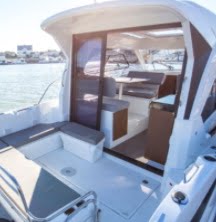
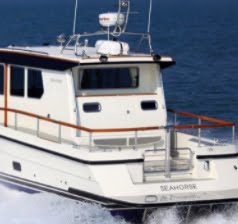
Must have equipment
- Bow thruster
Very important in docking and close quarters maneuvering (especially on a single engine boat) - Warm pressurized water
- Fresh water shower
- Chart plotter
can be installed afterwards but will be costly for a flybridge boat with dual stations - Echo sounder
- Refrigerator
- Shore power
- Trim tabs
- Anchor with electric windlass
boat of this size should have a heavy anchor and it is much easier to handle with an electric windlass
Great to have
- Manageable by a single person
Should be able to dock the boat single handed, at least in good weather
- Flybridge
Good / bad:- much nicer to skipper from the top when in fair weather
- creates a lot more deck space to hang around
- easier to see when maneuvering in close quarters
- center of gravity may be a bit higher
- more area for wind to take effect
- some people do not like them (not sure why, though)

- Walking side deck (at least one)
Good / bad:- easier access to forward deck
- easier to dock
- safer for kids, elderly, dogs and basically anyone
- takes some space from the cabin
- considerably restricts the boat choices
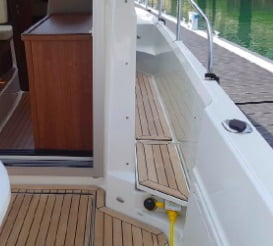
- Side door
Good / bad:- easier to dock, especially alone
- better visibility to the side
- improved ventilations
- takes space from the helm and requires that all control devices are mounted to the console instead of to the side of the helm seat
- considerably restricts the boat choices
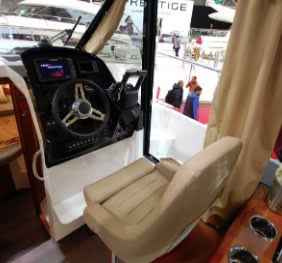
- Air draft max 3.5 m
This depends on where you boat, but in our area some bridges are 3.5 m
- Navigator seat
Turning seat back is also a good solution if there is no dedicated navigator’s seat
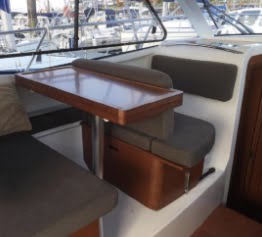
- CE design category B boat
CE categories are very broad and category C includes a lot of small boats and almost seaworthy crafts. However, B requires an outside certification and is clearly a proof of better seaworthiness. There are very few under 9 m boats or lightweight boats in general in category B as they have hard time meeting the requirements.
Nice to have
- Autopilot
autopilot is pretty expensive to install afterwards - Two engines
See comparison in the second part of this post series. - Automatic trim tabs (automation can be added afterwards)
- Semi-displacement (semi-planing) hull
or at least a minimal transition to plane and possibility for relatively low speed planing. Good and bad for the semi-displacement hull:
Good
- semi-displacement hull enables economical cruising at any speed, planing hulls enable that only in displacement speed and in planing speed.
- typically safer in slow speeds than planing hulls
- typically more economical in speed range of 7-15 knots
Bad
- lower maximum speed than with planing hull
- typically larger fuel consumption with speeds closer to the maximum speed
- Radar
Expensive to buy. With chart plotter radar overlay, nowadays much easier to use and interpret than when used to be standalone
Go to part 4: Potential boats, detailed analysis
